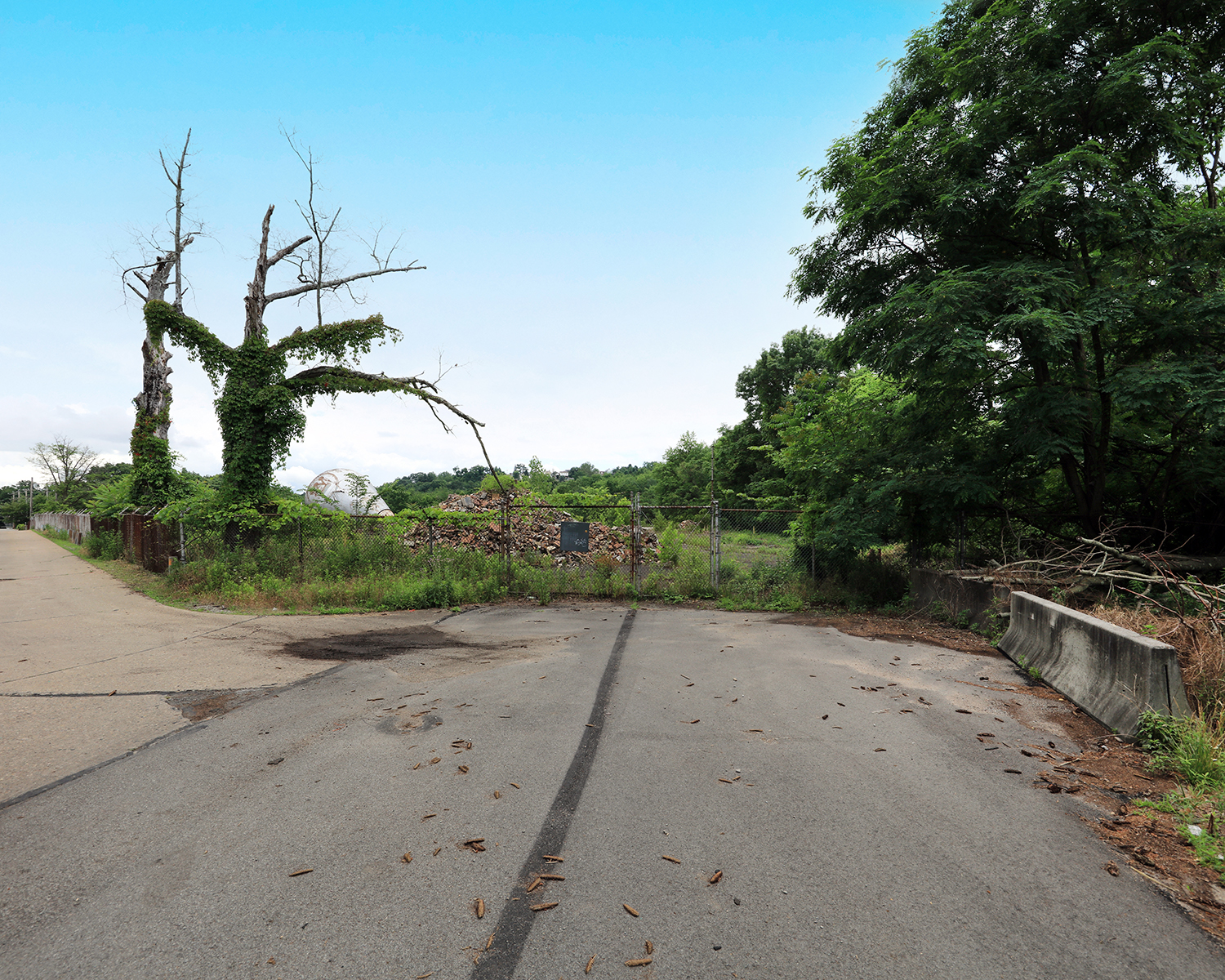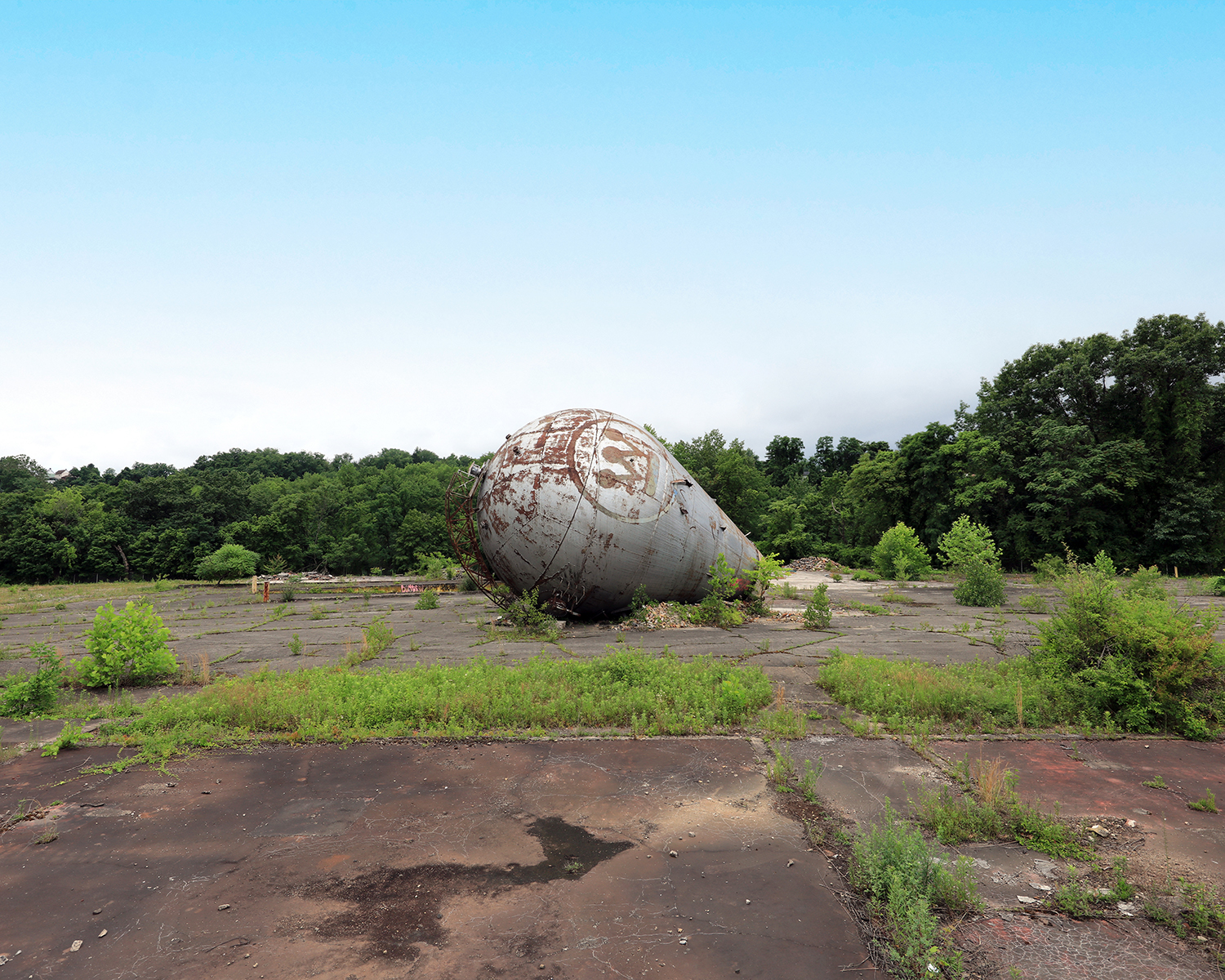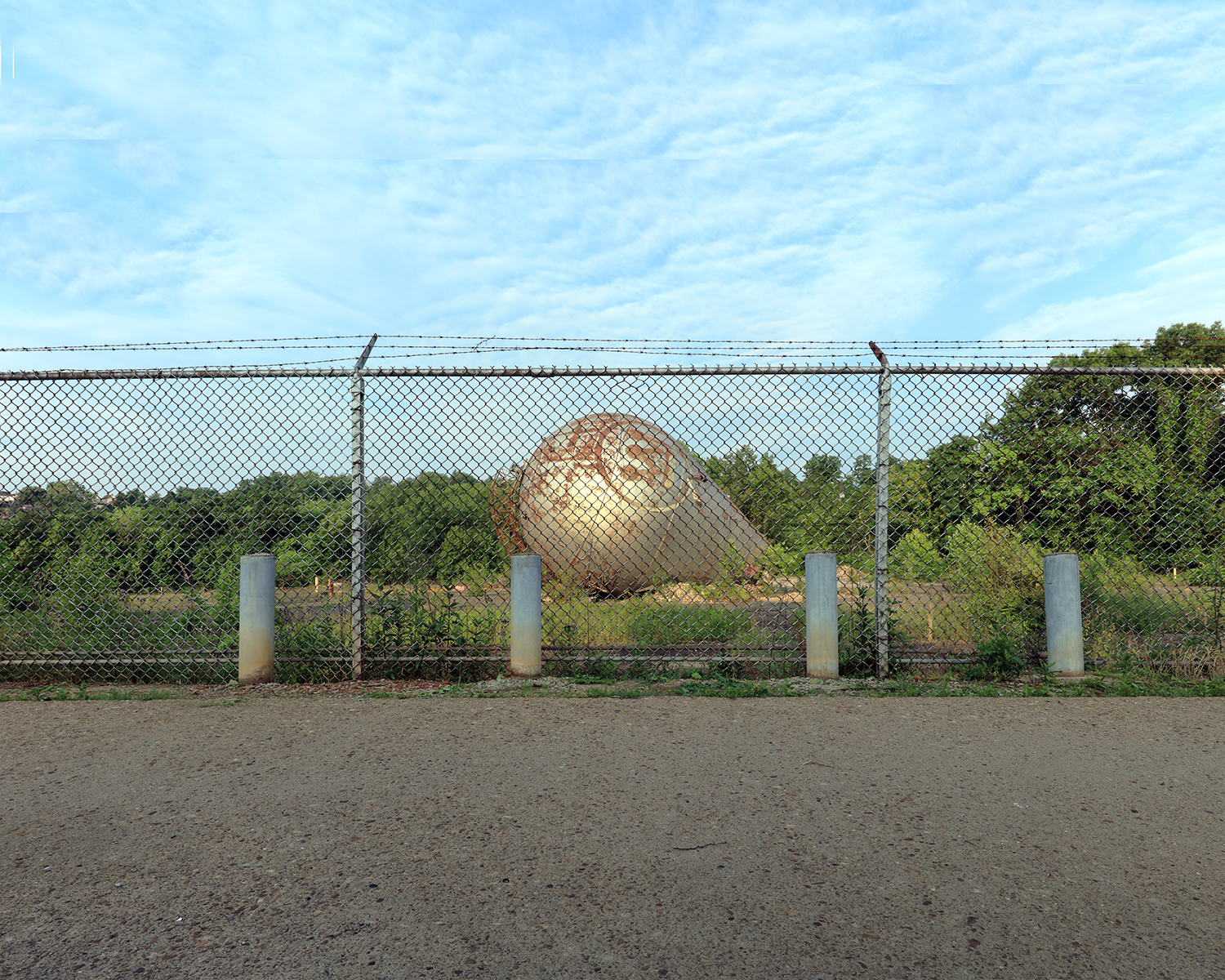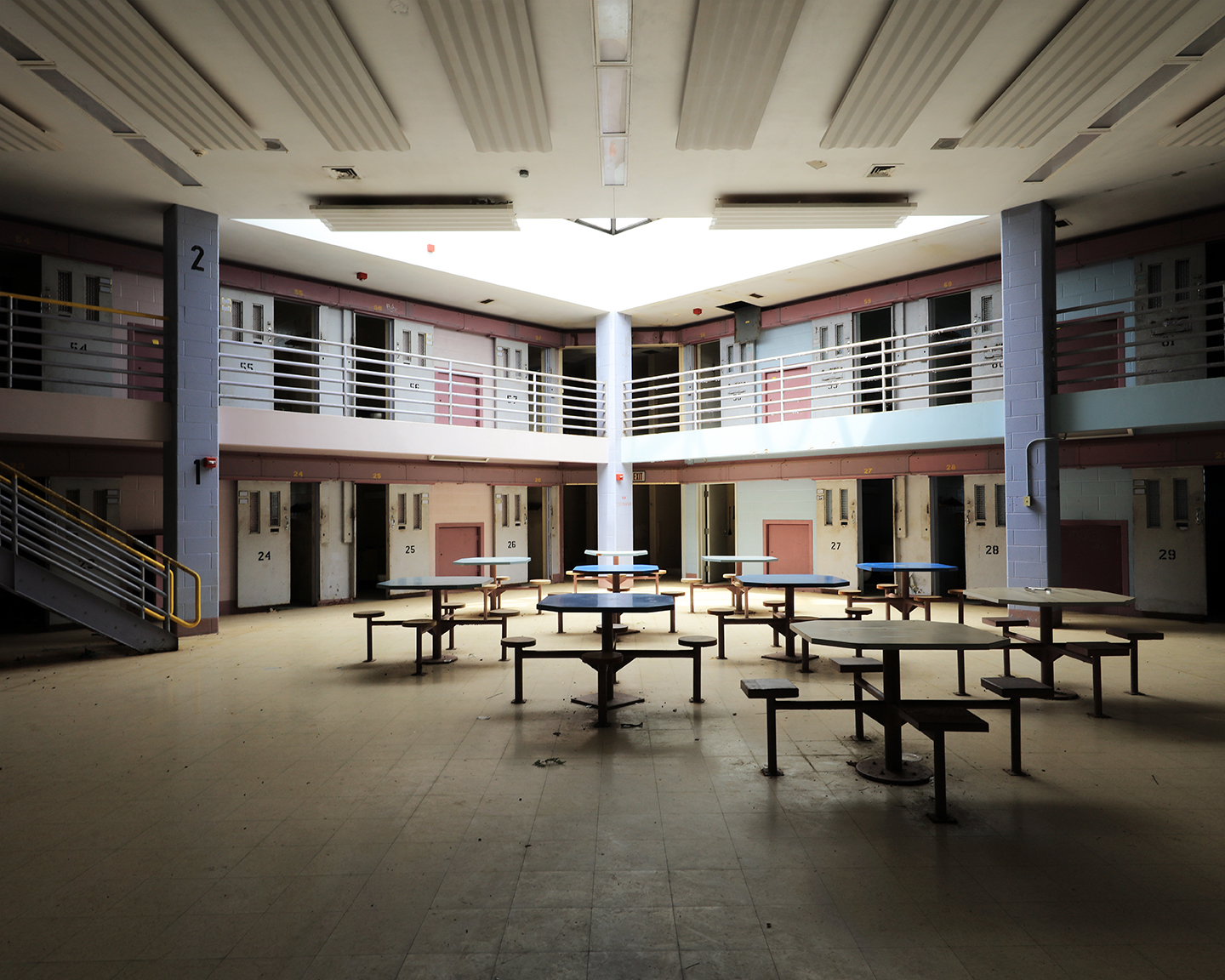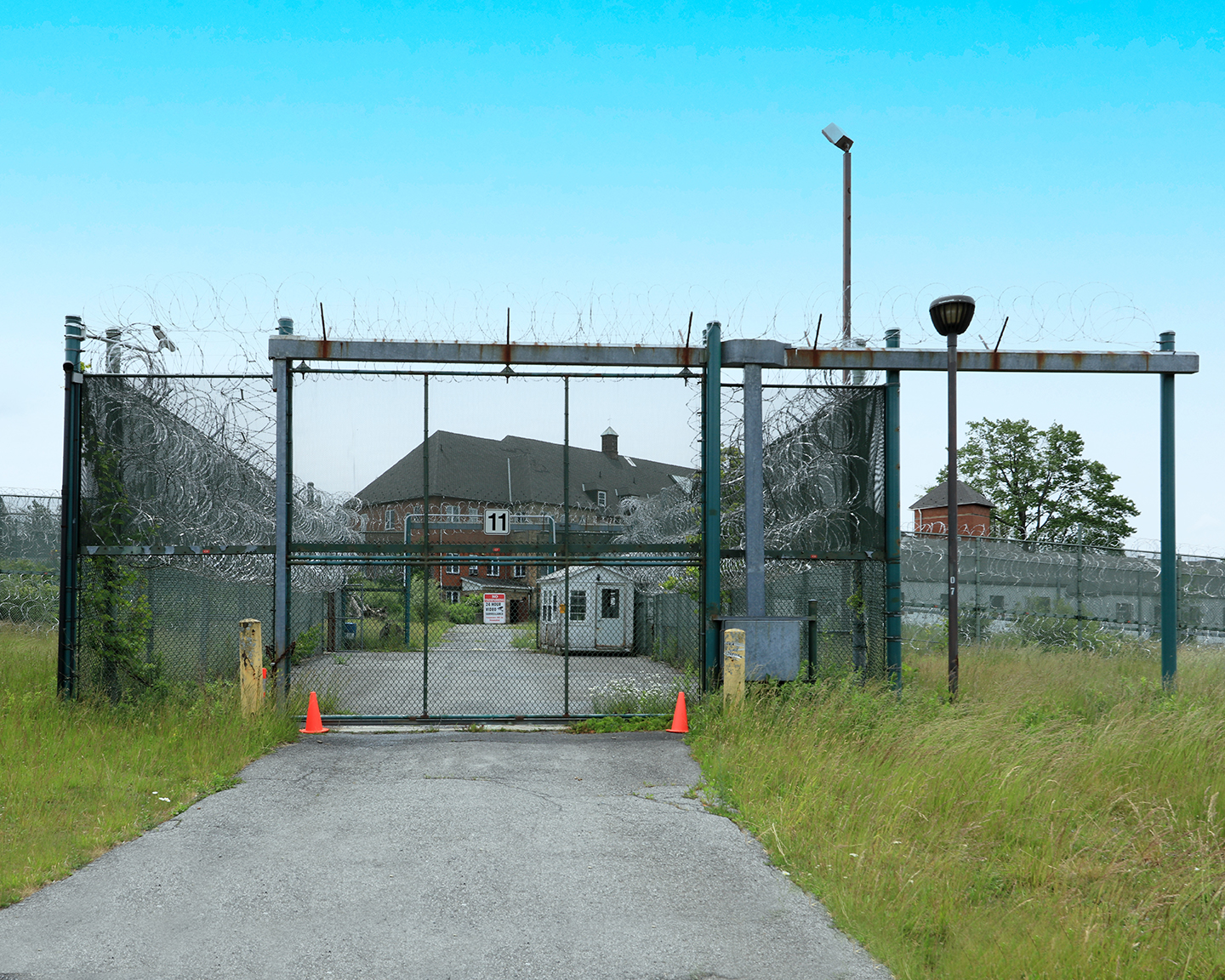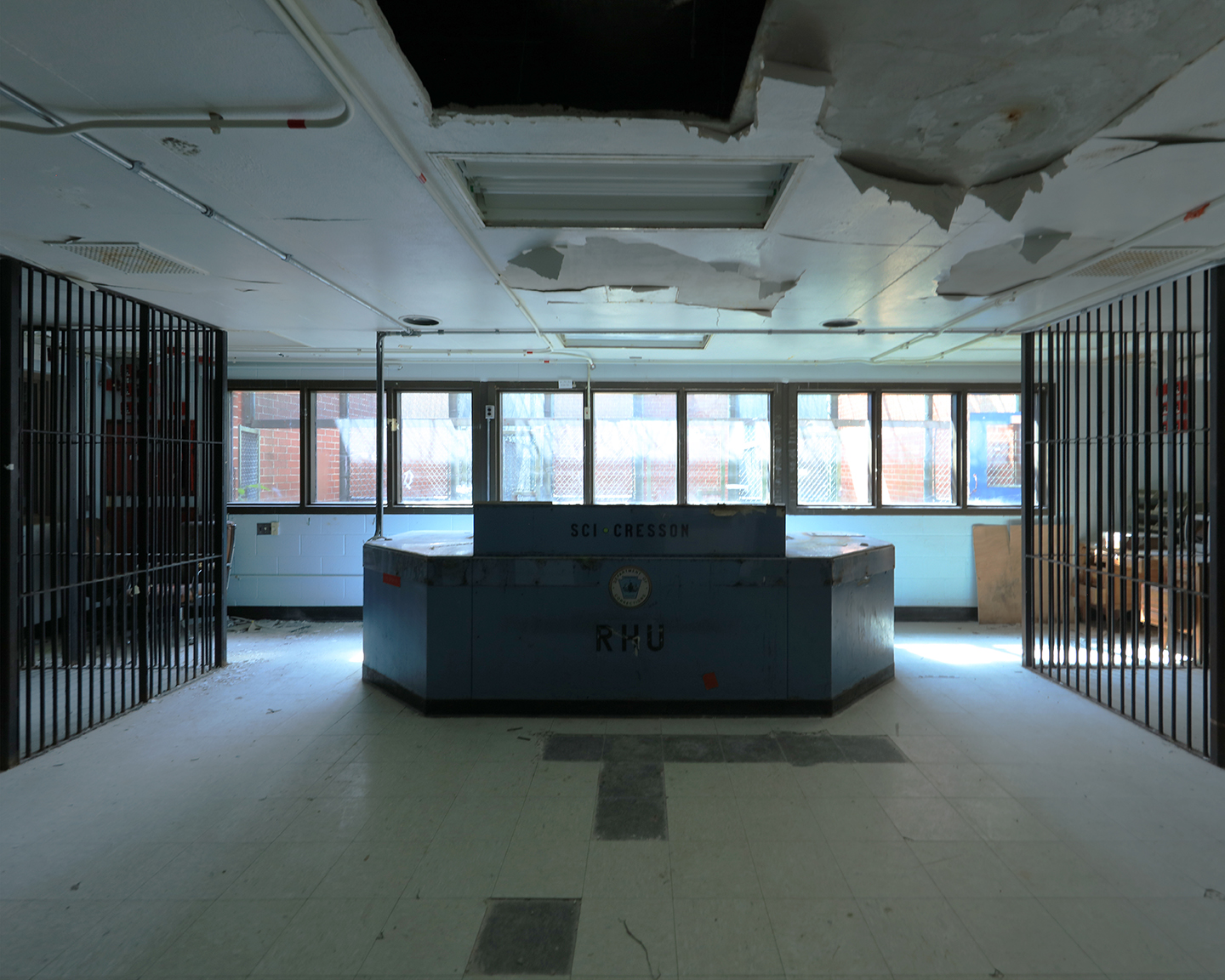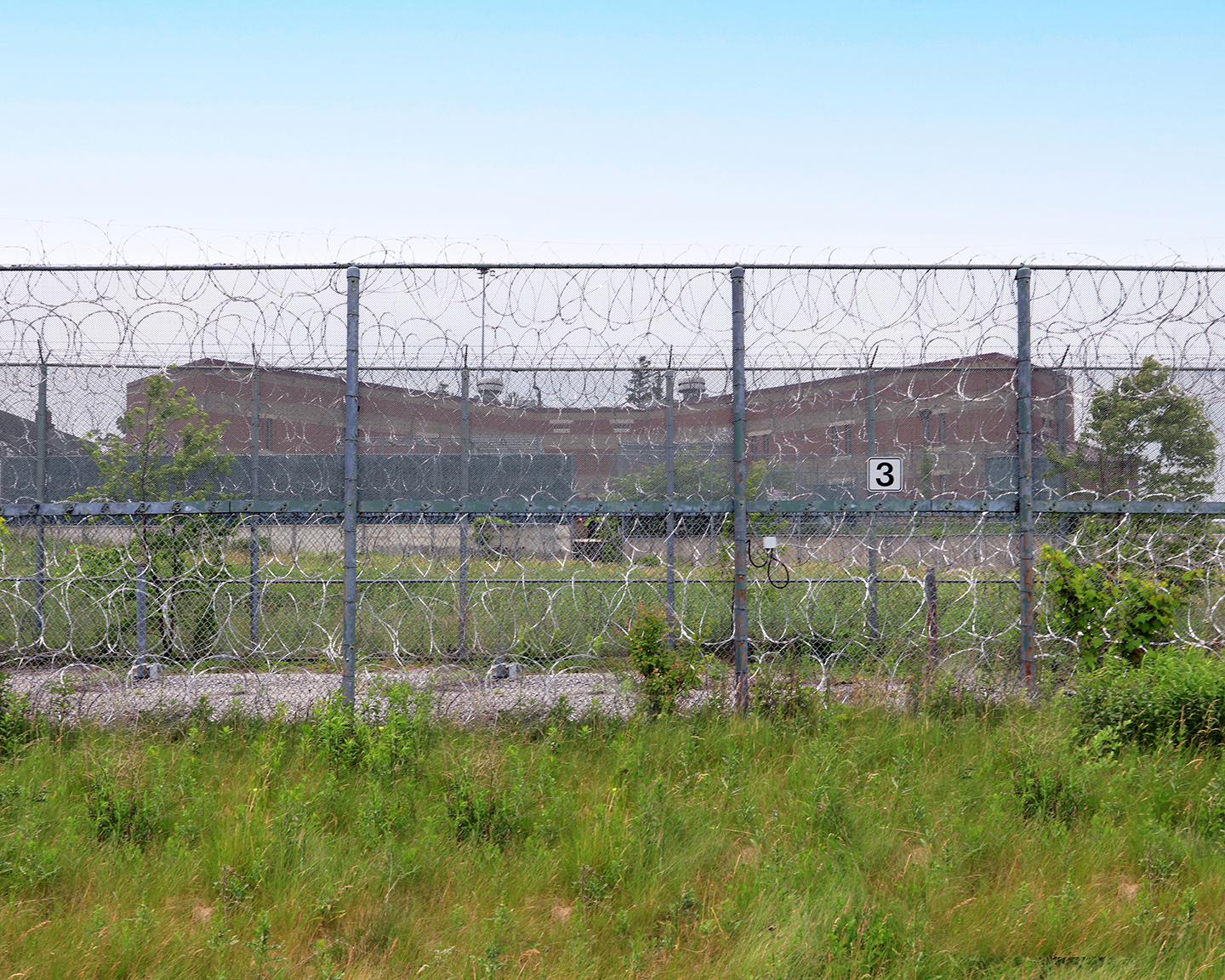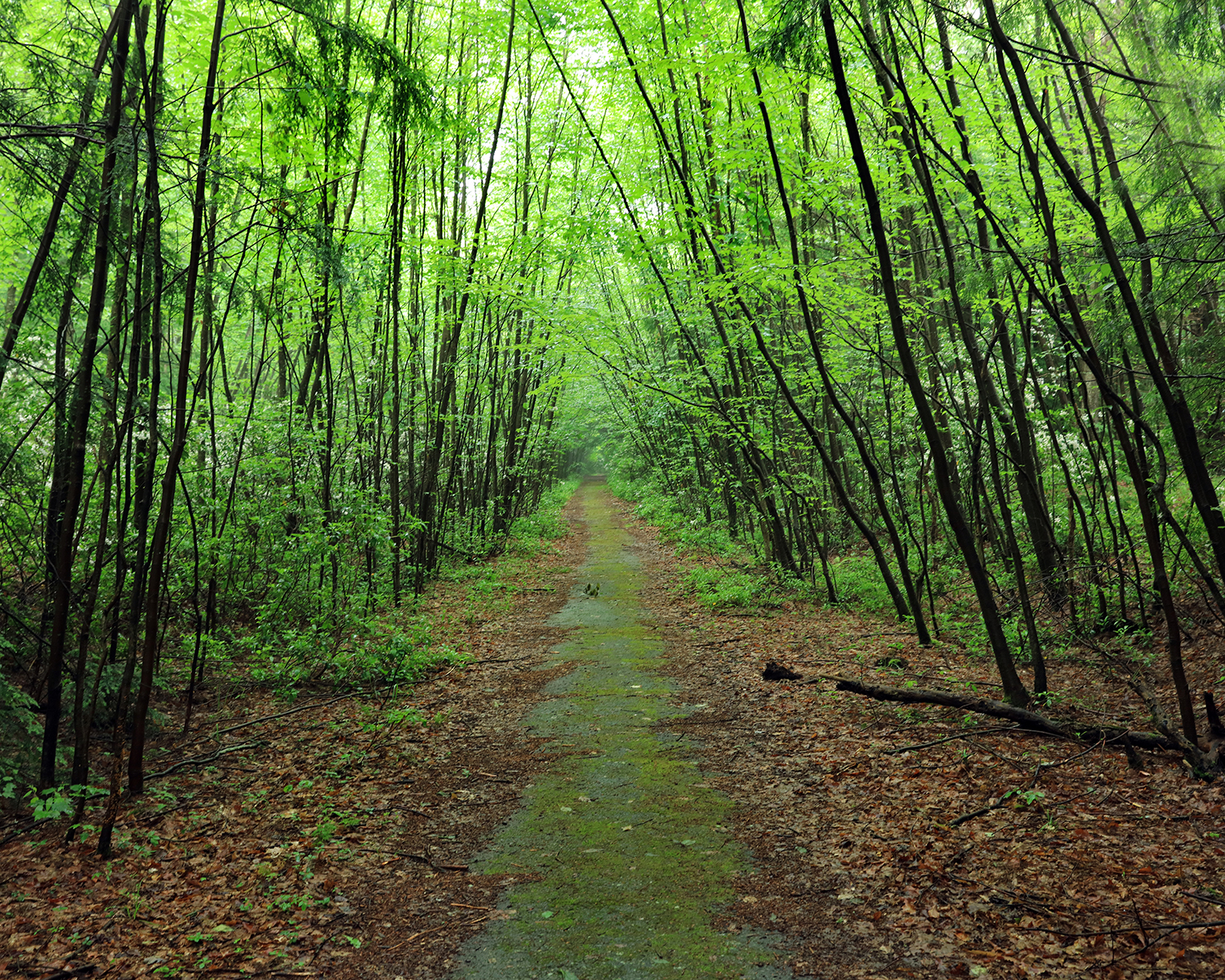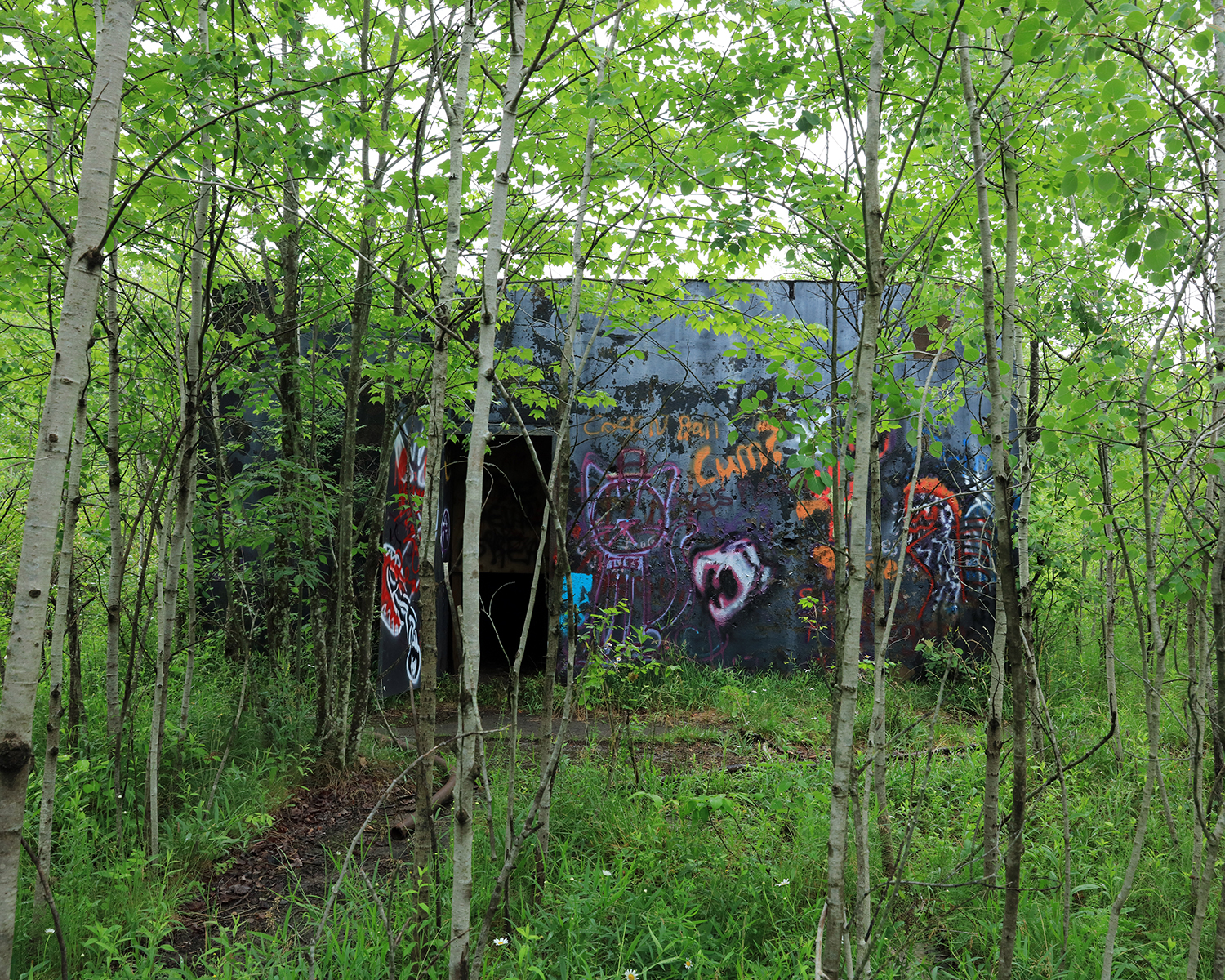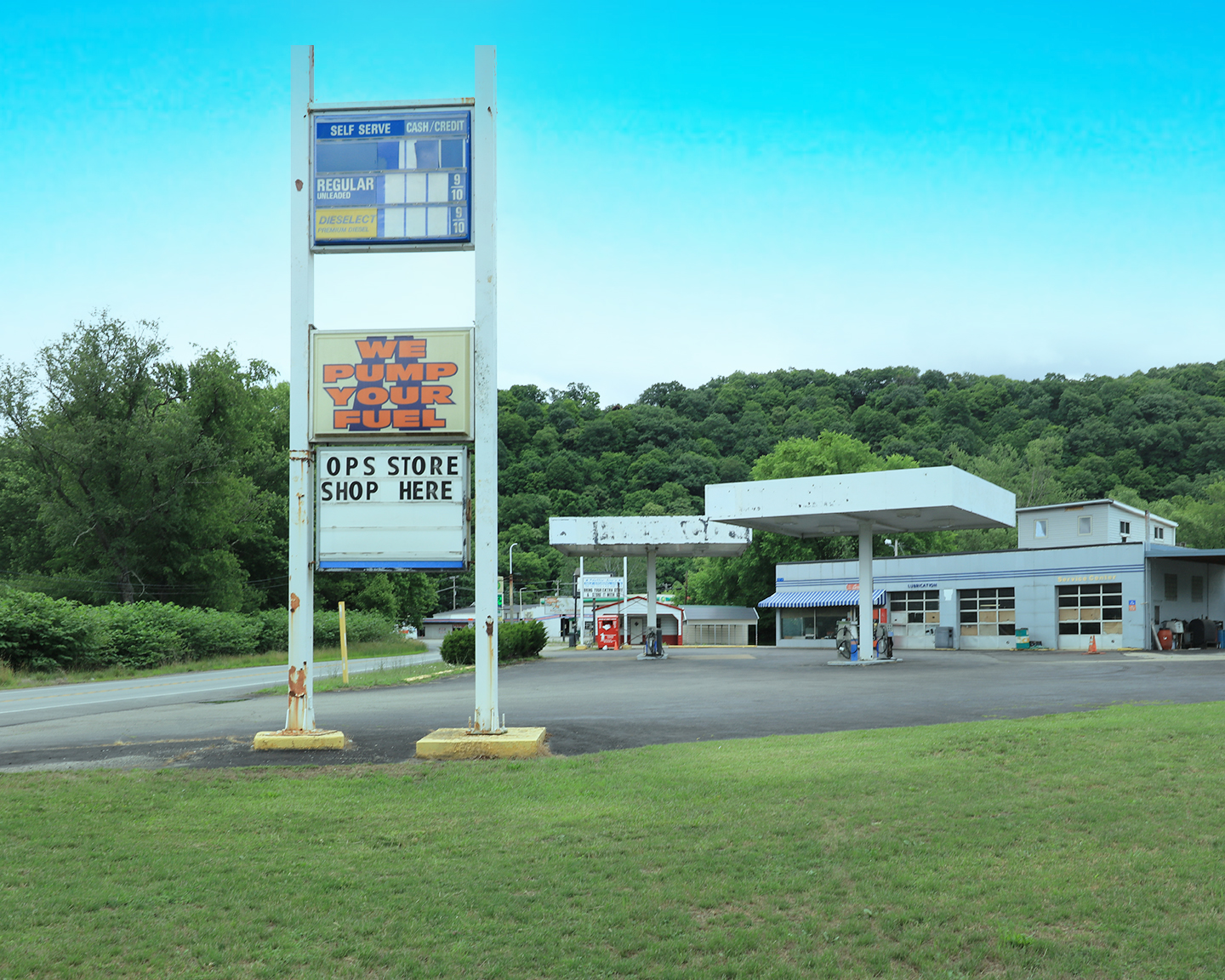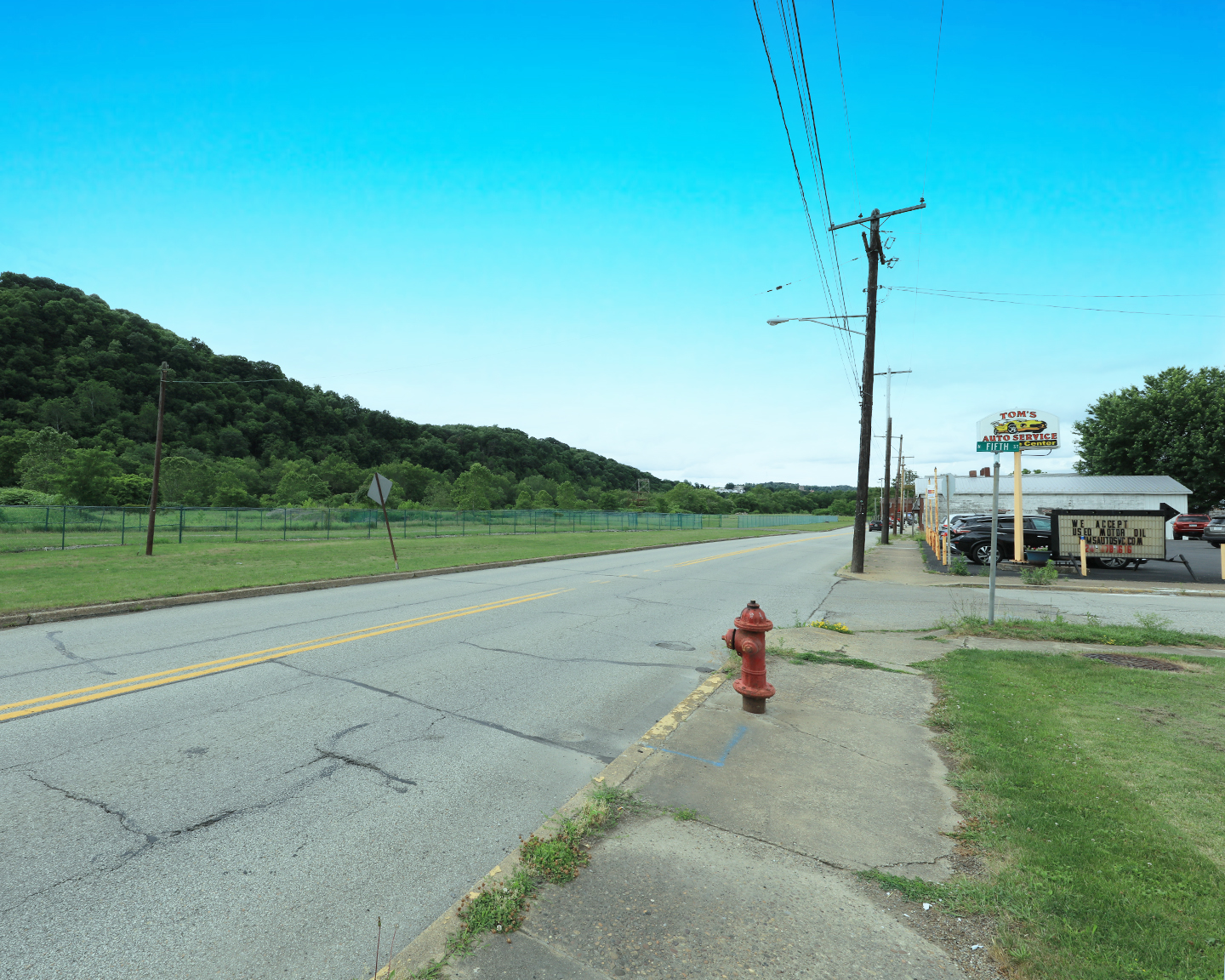For the past decade I’ve been working on a series documenting landscapes associated with nuclear energy.
I had heard about the Westinghouse Atom Smasher and if the name alone didn’t warrant a visit to this infamous nuclear curiosity its incredible legacy certainly did. Throw in Three Mile Island, an old rocket base hidden in the forest that developed a nuclear jet engine, and a town that somehow misplaced several hundred pounds of highly enriched uranium, and Pennsylvania has always been ripe for a nuclear adventure …
The fifth-most populous state in the United States, Pennsylvania was founded in 1681 through a royal land grant to William Penn. The state played a significant role in the American Revolution when, on December 12, 1787, it became the second state to ratify the U.S. Constitution. A hub of manufacturing, Pennsylvania subsequently fuelled the development of much of the nation’s early infrastructure, including military hardware used in the two World Wars and the subsequent Cold War.
With a population of 2.37 million people, Pittsburgh is Pennsylvania’s second largest city. It’s also home to the Westinghouse Atom Smasher. Located in the suburban enclave of Forest Hills, the facility was decommissioned in 1958 and has since been in slow demise. In 2015, the 65-foot-tall pear-shaped Atom Smasher, one of the last remaining artefacts, was dislodged from its supporting tower and now lays solemnly on its side surrounded by the encroaching forest.
The Atom Smasher was a 5 million volt Van de Graaff electrostatic nuclear accelerator constructed by the Westinghouse Electric Corporation in 1937. The instrument was the world’s first industrialized particle accelerator, colliding atoms into each other at close to the speed of light, creating both new particles and radiation. In 1940 the smasher was used in the nuclear fission of both uranium and thorium by gamma ray.
Along with the state’s rich nuclear heritage, Pennsylvania also has an extensive legacy when it comes to incarceration. Opened in 1829, and operational until 1971, Philadelphia’s Eastern State Penitentiary is particularly notable because it revolutionized incarceration, emphasizing the principle of reform over punishment. The prison was home to both Al Capone and Willie Sutton while in 1924, Pennsylvania Governor Gifford Pinchot allegedly sentenced Pep “The Cat-Murdering Dog” (an actual dog) to a life sentence at Eastern State for killing his wife’s cherished cat.
A little closer to Pittsburgh, about 10 miles west of Altoona, the State Correctional Institution – Cresson, was a medium-security, all male correctional facility that started life in 1916 as the Cresson Tuberculosis Sanatorium. As new drugs and treatments for tuberculosis heralded the decline of sanatoriums, the facility was transformed into the Lawrence F. Flick State Hospital, a treatment center for the mentally ill before becoming the preferred site for new a state prison. Additional infrastructure was added to the site in 1984, which included the construction and trial of prototype inmate housing concepts for future use at other institutions across the state. The prison operated until 2013, gradually falling into decay.
As the storms that wreaked havoc across the south moved north, Pennsylvania was lashed with rain. The three-hour drive to Three Mile Island was navigated through a torrential downpour which persisted at the destination. With the nuclear plant shrouded in a mist as ominous as the facility’s legacy, a telephone call to a friend from Santa Barbara, who was touring the east coast with his band, resulted in a change of destination – Canandaigua, New York. After a quick conversation about driving time, which roughly equated to my well-worn path from Fremantle to Kalgoorlie, I pointed the car north and headed to Lincoln Hill Farms to join thousands of others for a Toad the Wet Sprocket performance at the picturesque outdoor venue.
Drawing their name from a Monty Python skit, Toad the Wet Sprocket is an alternative rock band that formed in Santa Barbara, California, in 1986. Having found chart success in the 1990s with songs such as “Walk on the Ocean,” “All I Want,” and “Fall Down,” in 1998 the members went their separate ways before regrouping again a decade later. The band’s Canandaigua performance was nothing short of awe-inspiring. Leader singer and guitarist, Glen Phillips, is a sublime and poignant songwriter and the band magically oscillates its dynamics to underpin his inflicting lyrics.
Opening with “Windmills” from the band’s 1994 album Dulcinea, the ensuing set provided an enchanting mix of old and new. “California Wasted,” “Hold On,” and a solo rendition of “Transient Whales,” beautifully underlined the band’s contemporary relevance while older compositions such as “Dam Would Break,” “Pray Your Gods,” “Something’s Always Wrong,” along with a new-grass inspired reworking of “Good Intentions” (which saw the collective huddle around a single vintage microphone), offered a commanding insight into the degree of the collective’s musical depth and kinship.
Upstate New York came to the party too, turning on a sublime summer evening that Toad the Wet Sprocket and their audience took every opportunity to revel in. But as the venue fell into darkness, I had to sadly bid farewell to my dear old friend, and returned south to greyer skies. Tucked away in the Pennsylvania Wilds (which occupies much of northern Pennsylvania and about a fifth of the state), the Quehanna Wild Area is as remote as the Pennsylvania gets.
One of the largest wild areas in the state, Quehanna was founded in the 1950s as a nuclear research center, subsequently inheriting a legacy of radioactive and toxic waste contamination. In 1955 the Curtiss-Wright Corporation bought 80 square miles of state forest on which to develop nuclear-powered jet engines. In addition to a nuclear research center, with a nuclear reactor and six shielded radiation containment chambers (for handling radioactive isotopes), the complex also included two test cells with bunkers for nuclear-powered jet engine trials. Established as part of President Eisenhower’s “Atom’s For Peace” initiative, the program was cancelled after just a couple of years.
The beauty of the region is stunning. Backroads twist and turn their way through the mountainous terrain, which sporadically gives way to a succession of towns and encampments. In negotiating the local traffic, you frequently encounter horse drawn buggies belonging to local Amish and Mennonite communities. Even to the untrained eye spotting the difference is easy – the Amish buggies are an ode to simplicity and free from modern technology while the Mennonite vehicles are often equipped rubber tires, radios, and some even boast GPS systems.
Further south, few towns come with the legacy of Apollo. The Nuclear Material and Equipment Company established its headquarters in Apollo, Pennsylvania in the late 1950s to produce components for nuclear weapons. In 1965, between 200–600 pounds of highly enriched uranium disappeared from the facility. After investigations by the Federal Bureau of Investigation, Atomic Energy Commission, and Central Intelligence Agency, in February 1976 the CIA briefed senior staff at the Nuclear Regulatory Commission about the matter, stating that the agency believed the missing uranium was directed into to Israel’s nuclear weapons program. These days, not much remains of the facility, apart from a localized cancer cluster.
Prior to heading to Pittsburgh International Airport for my return flight to Los Angeles, I needed to return the tripod I purchased upon arriving in Pennsylvania. While negotiating the aisles of a sprawling local megashopolis, I was greeted by a familiar voice. Wafting down from the instore speakers came the lyrics “We spotted the ocean,” the opening line to Toad the Wet Sprocket’s 1991 “Walk on the Ocean.” Dragging out the transaction so as to enjoy the song about love and friendship and memories standing the passing of time. As happy as I was with my photographic haul from the trip, the images I will cherish most are the ones etched into my memory of a summer evening in Canandaigua, New York.
* By Brett Leigh Dicks, a Fremantle-based, Australian/American photographer and writer. Brett has recently concluded a period as Artist-in-Residence at the Museum of the Goldfields, Western Australia. Here’s his fab website.
** Don’t miss our earlier Fine Photography podcast with Brett Leigh Dicks right here.
*** And here’s more Fremantle Shipping News articles with photographs by Brett Leigh Dicks.
WHILE YOU’RE HERE –
PLEASE HELP US TO GROW FREMANTLE SHIPPING NEWS
FSN is a reader-supported, volunteer-assisted online magazine all about Fremantle. Thanks for helping to keep FSN keeping on!
** Don’t forget to SUBSCRIBE to receive your free copy of The Weekly Edition of the Shipping News each Friday!
